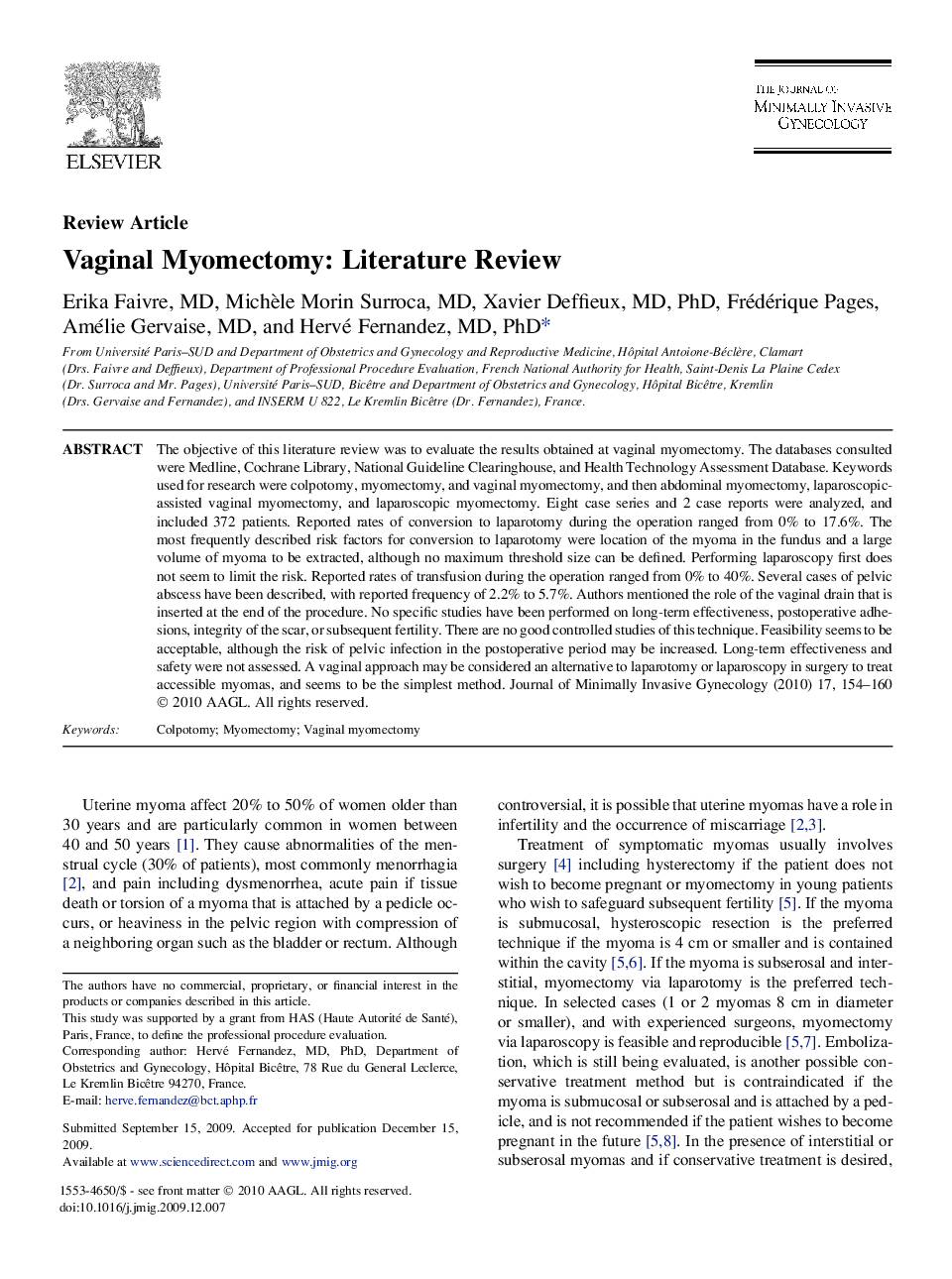| Article ID | Journal | Published Year | Pages | File Type |
|---|---|---|---|---|
| 3959587 | Journal of Minimally Invasive Gynecology | 2010 | 7 Pages |
The objective of this literature review was to evaluate the results obtained at vaginal myomectomy. The databases consulted were Medline, Cochrane Library, National Guideline Clearinghouse, and Health Technology Assessment Database. Keywords used for research were colpotomy, myomectomy, and vaginal myomectomy, and then abdominal myomectomy, laparoscopic-assisted vaginal myomectomy, and laparoscopic myomectomy. Eight case series and 2 case reports were analyzed, and included 372 patients. Reported rates of conversion to laparotomy during the operation ranged from 0% to 17.6%. The most frequently described risk factors for conversion to laparotomy were location of the myoma in the fundus and a large volume of myoma to be extracted, although no maximum threshold size can be defined. Performing laparoscopy first does not seem to limit the risk. Reported rates of transfusion during the operation ranged from 0% to 40%. Several cases of pelvic abscess have been described, with reported frequency of 2.2% to 5.7%. Authors mentioned the role of the vaginal drain that is inserted at the end of the procedure. No specific studies have been performed on long-term effectiveness, postoperative adhesions, integrity of the scar, or subsequent fertility. There are no good controlled studies of this technique. Feasibility seems to be acceptable, although the risk of pelvic infection in the postoperative period may be increased. Long-term effectiveness and safety were not assessed. A vaginal approach may be considered an alternative to laparotomy or laparoscopy in surgery to treat accessible myomas, and seems to be the simplest method.
